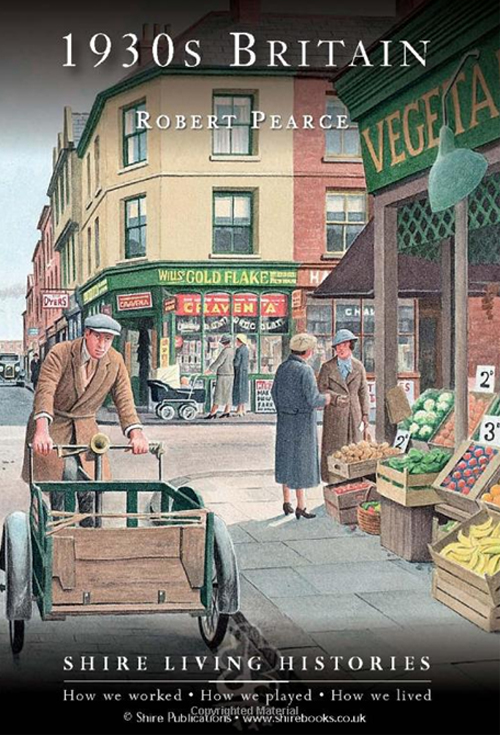1930s Britain
Review

1930s Britain by Robert Pearce, Shire Living Histories, 2010, paperback, 80 pp, £8.99, ISBN 9780747807797
This slim, attractively produced and extensively illustrated paperback with numerous sepia and full colour illustrations offers a handy guide to how we worked, played and lived in the thirties, a decade sometimes morbidly characterised, as the series editor Peter Furtado observes in his introduction, as a ‘dark valley‘ between ‘the twin precipices of depression and war‘. Space apparently precluded even a selective bibliography, but Robert Pearce provides a useful gazetteer of selected places to visit including the National Trust properties at Coleton Fishacre Upton House and 2 Willow Road Hampstead contrasting the growing preferences of the better off for innovative Arts and Craft, Art Deco and Modernist styles with the grim legacies of urban overcrowding exemplified by the Birmingham Back to Backs reminding us of the conditions in which large numbers still lived in the urban conurbations like Birmingham and Leeds in 1930s Britain.
Pearce interestingly and graphically starts his survey reflecting upon the slow-moving queues of mainly unemployed men outside the Labour Exchange in Blackburn in the closing months of 1932, which provides a springboard for a highly topical discussion of the benefits system and the causes of mass unemployment following the Wall Street Crash of 1929. An evocative photograph of Blackburn from Corporation Park in 1930 subsequently illustrates vividly the pall of dense atmospheric pollution which hung over the Lancashire mill town at the beginning of the decade and comments that only with the onset of the depression was it possible to count the number of factory chimneys - though he might have added that the annual wakes week holidays provided other more fleeting opportunities for this rather insalubrious version of I-Spy.
However, Pearce observes that not even the ‘hungry Thirties' could halt ‘the public's seemingly insatiable demand for entertainment in general and the cinema and American "movies" in particular' and high-profile visitors to Blackburn in the 1930s included Gracie Fields, Charlie Chaplin and Paul Robeson as well as King George V and Queen Mary, prime minister Neville Chamberlain and - a surprising omission from Pearce's text - Mahatma Gandhi's well-publicised visit to the town in 1931 to see for himself the impact of the loss of the Indian market on the declining Lancashire cotton industry. This succinct, lively and informative text is a serious attempt to convey some of the contrasts of a decade which has been scrutinised by recent more weightier volumes ranging from the more pessimistic perspectives of Piers Brendon and Richard Overy to the more optimistic takes on the decade of Juliet Gardiner and Martin Pugh.

